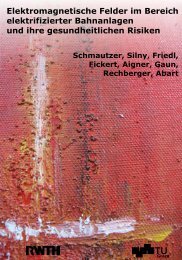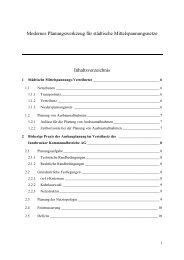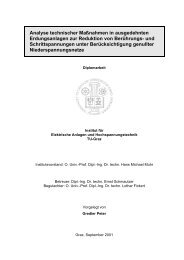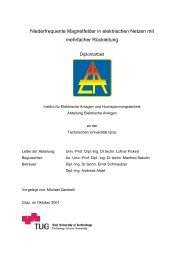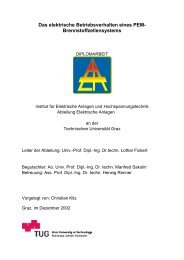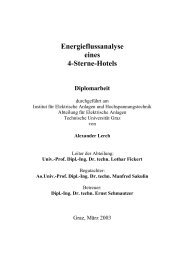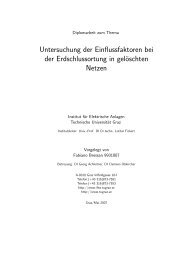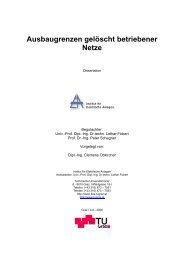Development of a wavelet-based algorithm to detect and determine ...
Development of a wavelet-based algorithm to detect and determine ...
Development of a wavelet-based algorithm to detect and determine ...
Create successful ePaper yourself
Turn your PDF publications into a flip-book with our unique Google optimized e-Paper software.
6.2. BASIC IDEAS OF THE WAVELET TRANSFORM 50<br />
For a function f(t) <strong>and</strong> a mother <strong>wavelet</strong> ψ(t), the corresponding discrete form <strong>of</strong> the<br />
continuous <strong>wavelet</strong> transform is then:<br />
Wψf(j, n) = 2 −j/2<br />
�<br />
f(t)ψ ∗<br />
� j t − 2 n<br />
2j �<br />
dt (6.10)<br />
In such a way, the discretization <strong>of</strong> the continuous <strong>wavelet</strong> transform is done. Since<br />
only the scale <strong>and</strong> the translation are discrete in the power <strong>of</strong> two <strong>and</strong> the time variable<br />
is continuous, the discrete transform in Equation 6.10 is called the continuous time<br />
<strong>wavelet</strong> series or the dyadic <strong>wavelet</strong> transform.<br />
A discrete form <strong>of</strong> the continuous <strong>wavelet</strong> transform is specified by the sampling<br />
choice <strong>of</strong> the scale <strong>and</strong> the translation in the time-scale plane <strong>and</strong> the choice <strong>of</strong> the<br />
mother <strong>wavelet</strong>. It is clear that there might be infinite such choices but certainly that<br />
the choices cannot be made arbitrarily. The limit is that such the discretization should<br />
satisfy a basic property, namely, invertibility.<br />
This very practical filtering <strong>algorithm</strong> yields a fast <strong>wavelet</strong> transform - a box in<strong>to</strong> which<br />
a signal passes, <strong>and</strong> out <strong>of</strong> which <strong>wavelet</strong> coefficients quickly emerge. Let’s examine<br />
this in more depth.<br />
One-Stage Filtering: Approximations <strong>and</strong> Details<br />
For many signals, the low-frequency content is the most important part. It is what gives<br />
the signal its identity. The high-frequency content, on the other h<strong>and</strong>, imparts nuance.<br />
It is like the human voice. Removing <strong>of</strong> high-frequency components, causes the voice<br />
sounding different, but it can be underst<strong>and</strong>. However, enough removing <strong>of</strong> the low-<br />
frequency components, causes the voice not <strong>to</strong> be unders<strong>to</strong>od. In <strong>wavelet</strong> analysis, this<br />
parts are called approximations <strong>and</strong> details. The approximations are the high-scale,<br />
low-frequency components <strong>of</strong> the signal. The details are the low-scale, high-frequency<br />
components.<br />
The one stage filtering process, at its most basic level, looks like this:<br />
To get as much samples as the input signals, the approximated <strong>and</strong> the detailed part



